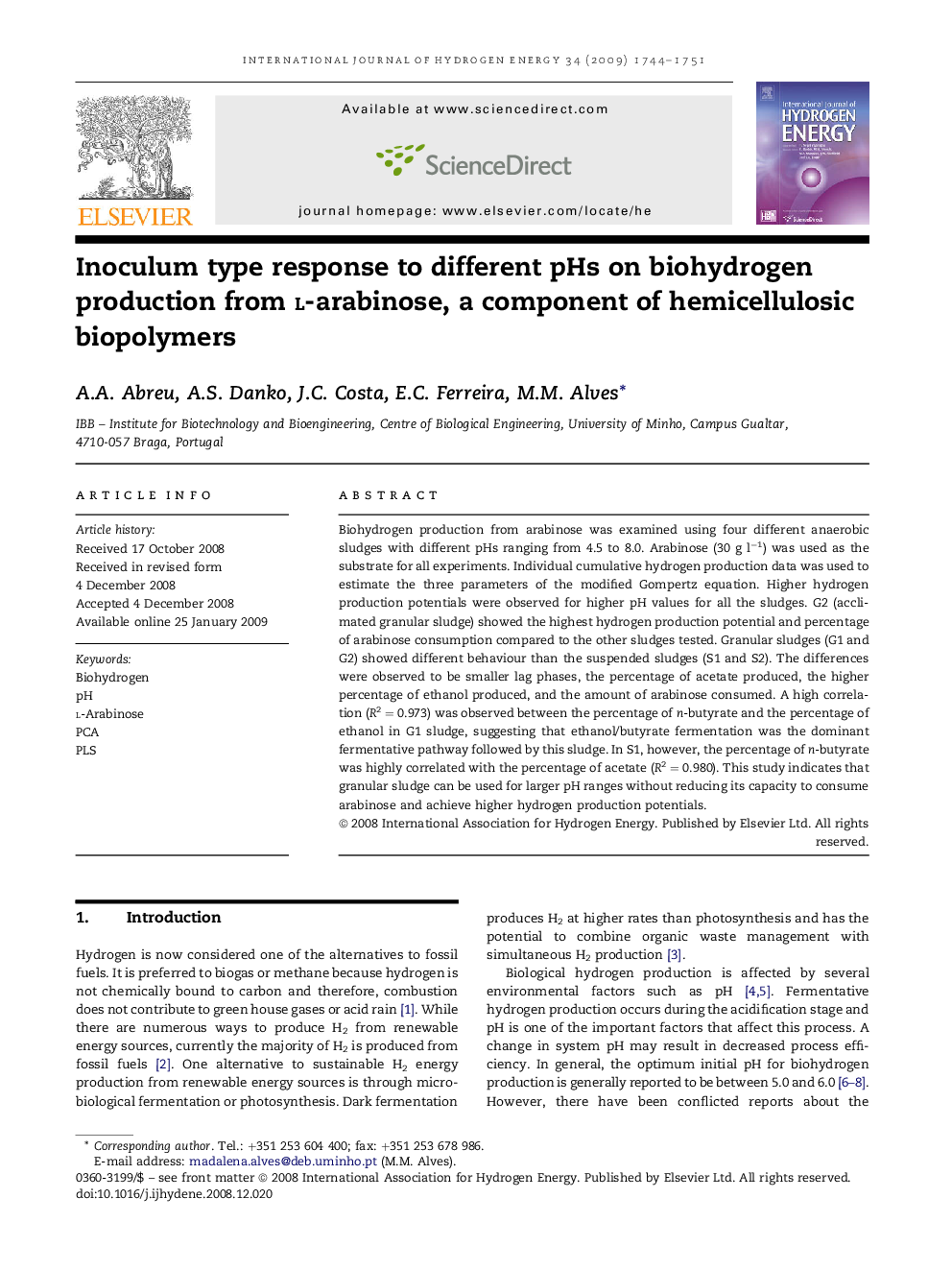| Article ID | Journal | Published Year | Pages | File Type |
|---|---|---|---|---|
| 1274294 | International Journal of Hydrogen Energy | 2009 | 8 Pages |
Biohydrogen production from arabinose was examined using four different anaerobic sludges with different pHs ranging from 4.5 to 8.0. Arabinose (30 g l−1) was used as the substrate for all experiments. Individual cumulative hydrogen production data was used to estimate the three parameters of the modified Gompertz equation. Higher hydrogen production potentials were observed for higher pH values for all the sludges. G2 (acclimated granular sludge) showed the highest hydrogen production potential and percentage of arabinose consumption compared to the other sludges tested. Granular sludges (G1 and G2) showed different behaviour than the suspended sludges (S1 and S2). The differences were observed to be smaller lag phases, the percentage of acetate produced, the higher percentage of ethanol produced, and the amount of arabinose consumed. A high correlation (R2 = 0.973) was observed between the percentage of n-butyrate and the percentage of ethanol in G1 sludge, suggesting that ethanol/butyrate fermentation was the dominant fermentative pathway followed by this sludge. In S1, however, the percentage of n-butyrate was highly correlated with the percentage of acetate (R2 = 0.980). This study indicates that granular sludge can be used for larger pH ranges without reducing its capacity to consume arabinose and achieve higher hydrogen production potentials.
